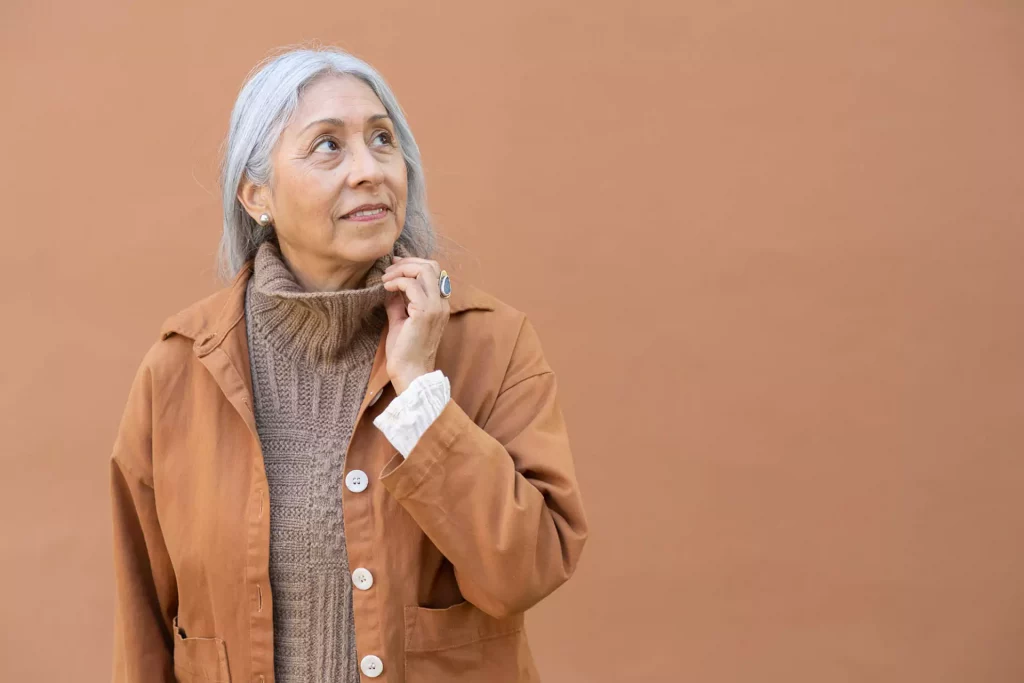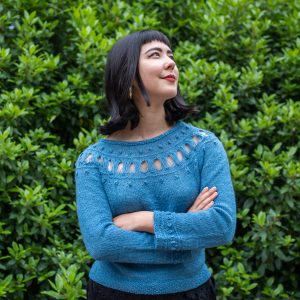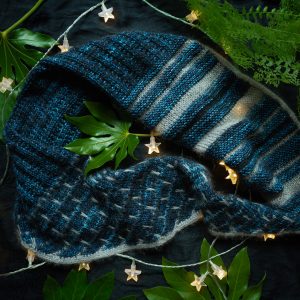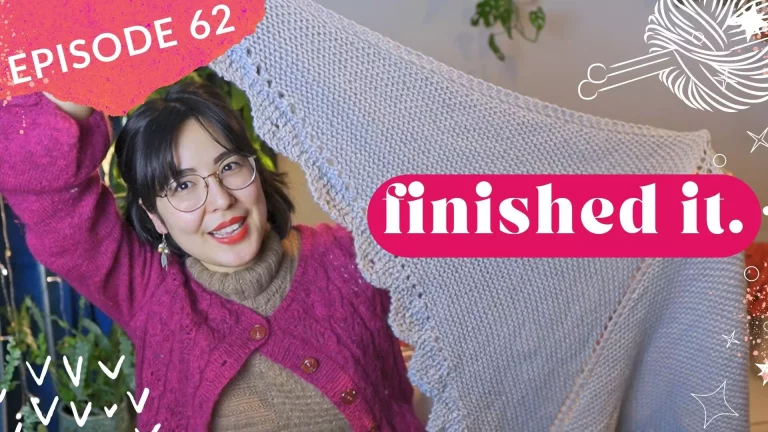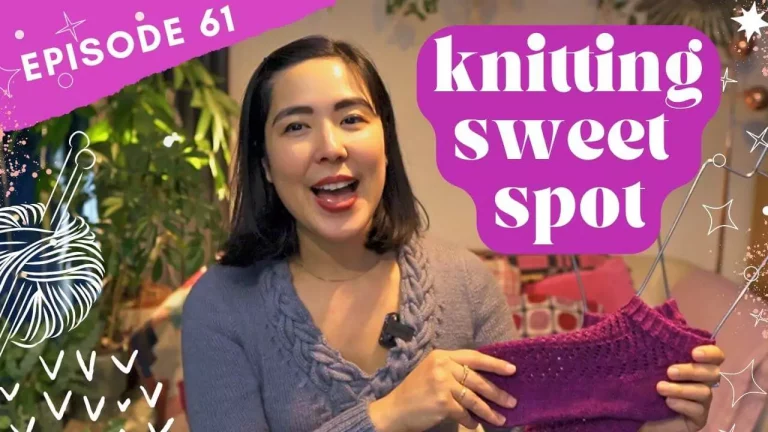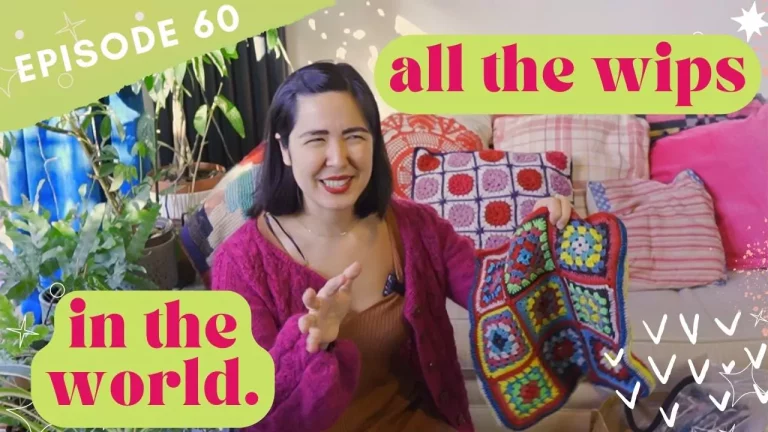In my knitting life, I frequently find myself gravitating towards the simple kind of textured stitch patterns which can be formed using just the knit and purl stitch, and perhaps with an occasional twisted stitch dotted about. To my mind, far more interest in silhouette, shape and form can be achieved when the surface texture is greatly simplified.
I pushed this idea almost to the limits in my design for a Knit Dickey, now published in Making Magazine Winter Vol. 4 / Gifts. In this post I’ll share more about the background of this design, and how I was inspired by quilting and hand-stitching techniques when dreaming up the concept.
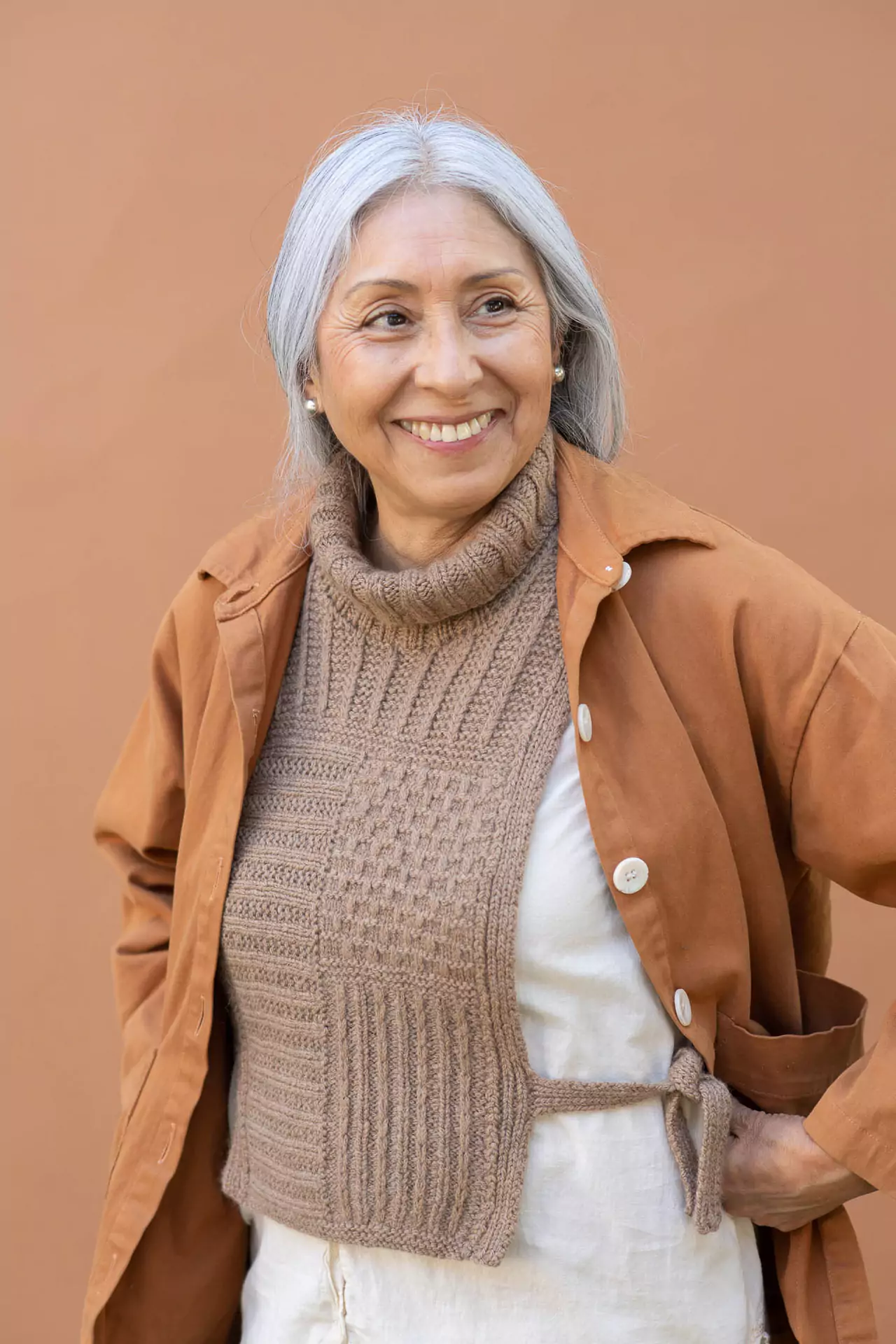
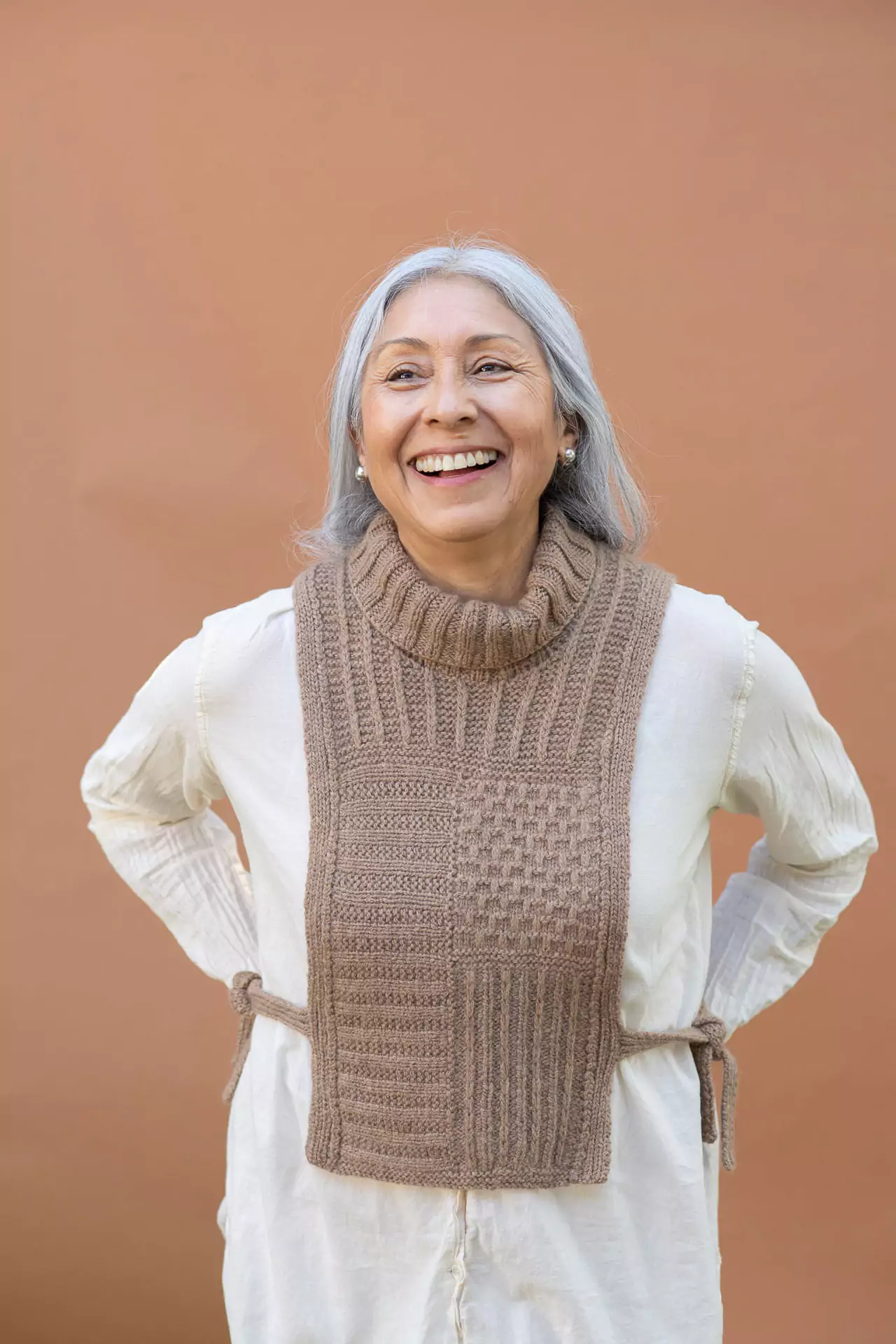
But first…what’s a dickey?!
Great question – and something that I wondered myself! A dickey is a hybrid accessory garment resembling a tabard, and falling somewhere between a cowl, scarf, poncho and sweater vest. It also resembles one of those false-front shirtwaists or waistcoats which are slipped beneath a dinner jacket.
Avoid stuffed sleeves, mitigate hot flashes…
Because there are no sleeves, the dickey adds warmth beneath a jacket without causing uncomfortable bulkiness through the sleeves. Have you ever found yourself frantically stuffing your sweater-clad arms through a coat sleeve? Straining the seams as you tug and tug the coat upwards, only to find that your arms resembled a stuffed sausage, and you can’t bend them at the elbows?! Wearing a dickey avoids that problem, basically!
A knitter on Instagram also commented that a dickey is especially good if you’re someone who runs on the warmer side, or suffering from hot flashes due to the menopause. I am in full favour of destigmatising women’s health issues, so I am happy to share this tip!
Styling a dickey
A dickey makes a great layering piece as it’s quite slender and can be styled in all kinds of ways. In these photos it’s worn above a shirt or thin sweater, and beneath a jacket. I think you could get really creative with layers and play around with dresses and sweaters of varying degrees of looseness and tightness.
I actually first encountered a dickey a few years ago in a trendy Swedish fashion store and was intrigued by its concept and potential for styling. I’m so happy to have now had the chance to really explore it as as an accessory.
The design concept: interpreting quilting and stitching through knitting
The concept for this design centres around the quilt block and the stitching or embroidery sampler. I wanted to make a connection between these different forms of textile arts: quilting, embroidery and knitting are all historically associated with women’s labour: skilled hand-work which was frequently carried out in a communal or group setting.
Stitch samplers
Prior to mass-industrialisation of garment production, skills in needlework enabled women to transform mundane domestic labour into a source of household income.
One way of highlighting those skills was by making a sampler, a piece of stitching that shows off many different patterns and motifs on one piece of cloth. To my mind, the sampler can function similarly to an artistic portfolio, as it demonstrates the depth and breadth of an individual craftsperson’s repertoire. I riffed off this idea for the Knit Dickey by using its small surface-area to display a total of 7 different knitting stitch patterns, which I explore below.
Tesselating quilt blocks
I have been drawn to the style of North American quilt blocks for a long time, where bold colours are used to create patterns that work both in the smaller block unit, and the larger quilt. From quilting, I borrowed the concept of building out larger pieces by rotating and joining smaller shapes.
The Knit Dickey draws on the rotating element of quilting taken from a Log Cabin style. That is, you work a rectangle, then rotate it 90°, and then join your next rectangle, rotate it 90°, repeat…Trust me, it’s much easier than it looks in words!
You can see this in the front right portion of the Knit Dickey (the model’s right side). Notice that the long rectangle of Garter Rib is going crossways:
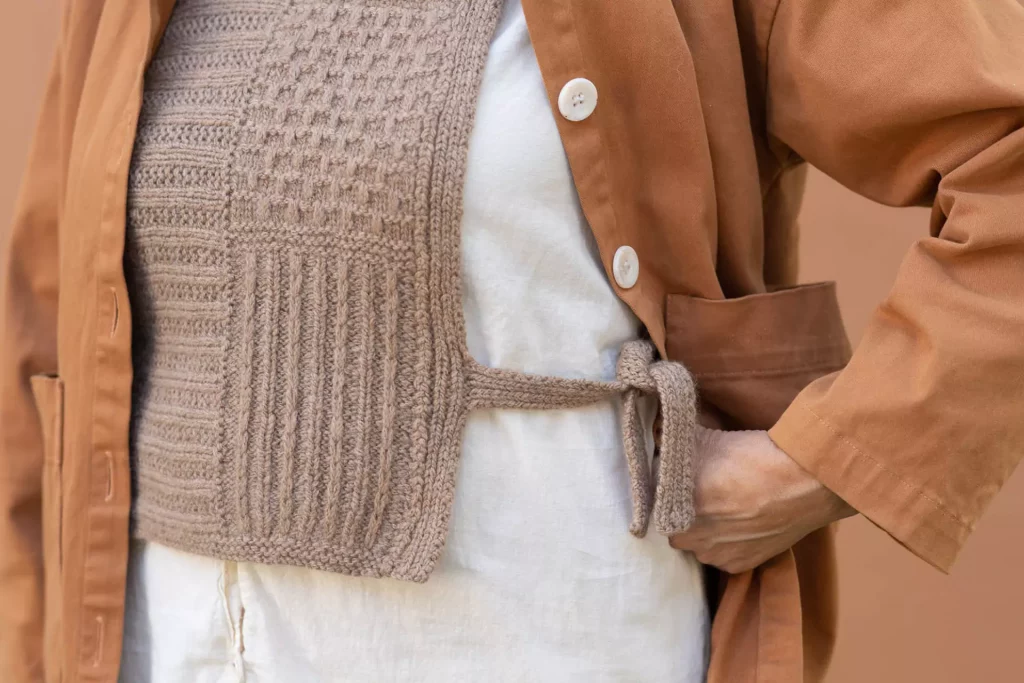
This tessellating construction is really fun to knit, and it brings a lot of freshness to the accessory. However I’m also wondering whether I should create another, more straightforward version of the dickey pattern – for knitters who want a more straightforward experience. Let me know what you think 🙂
The 7 knitting stitch patterns in the Knit Dickey sampler
The Knit Dickey design explores 7 stitch patterns, which are all variations on a theme: of garter stitch and rib. But really, they are just different ways of displaying the V of the knit stitch and ~ bump of the the purl stitch.
- 1×1 rib
- 2×2 rib
- Garter Stitch
- 2×2 Garter Rib
- Garter Column Stitch
- Brick Stitch
- Alternating slipped stitch rib
These stitch patterns are all fairly simple to knit. They do work up with different gauges, and the pattern instructs you in great detail about how to accommodate this by changing needle sizes. The good thing about this pattern is that each patterned section is about the size of a standard gauge swatch, so I would go ahead and knit first, measure later. If your gauge is wildly off and you have to unravel it, then it’s no more effort than swatching would be anyway.
The yarn: knitting the golden dusty-golden sample
The yarn used in the sample is Woolfolk Får, meaning sheep in Scandinavian languages. This is a 100% merino worsted-weight yarn with a chain construction.
Chain construction means that the yarn is not formed by plying together multiple strands in way that yarn is conventionally spun. Rather, this yarn is essentially a very narrow tube of knitting.
The sample is knit in Shade 22, a glorious old-gold colour. This shade has grown on me in time. At first I admit I found it a bit too biscuity-beige for my taste; but the intriguing thing about the chain construction of the yarn is that it holds a lot of shadows within it. This gives the yarn more depth to its colour and some more ‘busyness’ to the surface, as each stitch contains shadows whilst simultaneously casting shadows on the surface. Yet then, the fuzziness of the Merino fibres give a haze to the whole thing, like you’re squinting at something complex and moving.
I think that simplicity is again the best way to flatter this yarn; and I’m sure that it’s no coincidence that many of the designs on Woolfolk‘s website have fuss-free surfaces. This ensures that the focus is always on the yarn itself.
Substituting yarn for the Knit Dickey pattern
Woolfolk Får is definitely a luxury yarn, and I feel really lucky to have experienced working with it. You may prefer to use a different yarn, whether due to budgetary reasons, availability (I think it’s fairly uncommon in the UK, but not impossible to get hold of), or colour options.
Spin and weight of yarn substitutions
I recommend sourcing a worsted-weight wool yarn which is also worsted-spun. Worsted-spun yarns create fabric with a smooth and sleek surface, and this will allow all the subtleties between the different textured stitch patterns to shine. In general, worsted-spun yarns are the more commonly available option (as opposed to woollen-spun yarns).
I actually initially swatched for this design using Quince & Co Lark, which is an extremely smooth worsted-weight wool. I also love Hudson + West Co Forge, another wonderful wool yarn. These two are easy swaps and I can see them producing great results. You could also try De Rerum Natura Gilliatt, which might be just slightly more on the fuzzy side – not necessarily a bad thing.
Suitable colours: dye and blending
In terms of colour and dyeing effects, I think the Knit Dickey design would look great in heathered and subtly mottled, tonal shades, as well as straightforward flat colours. But I recommend that you avoid anything too busy or overpowering, as it will draw attention away from the stitch patterns. You’re putting in a lot of work to knit this design, and the yarn-choice should complement that, not distract from it!
For more tips, check out my video tutorial on yarn substitution, which goes through all the key factors you need to think about when swapping a different yarn than was recommended in the pattern.
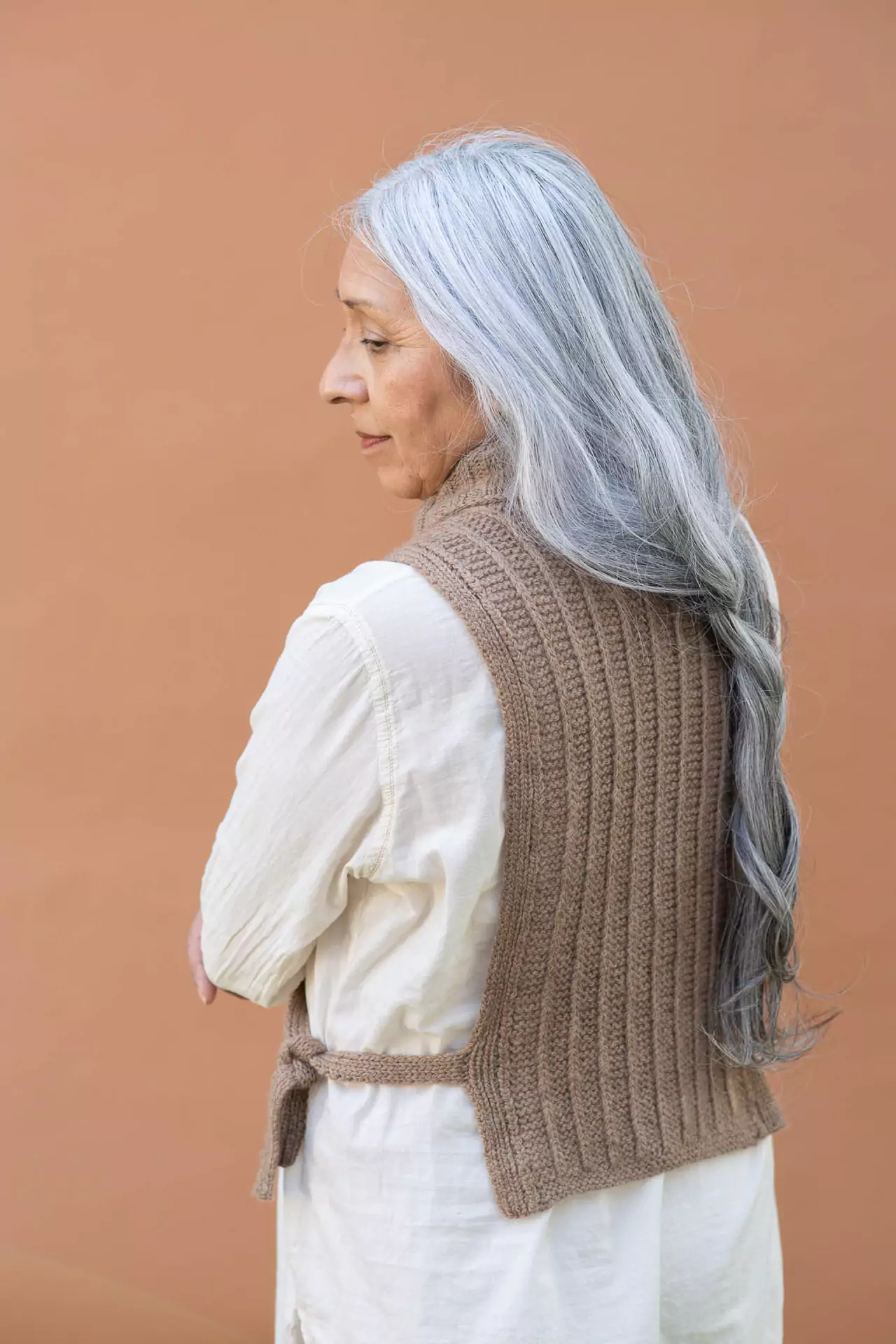
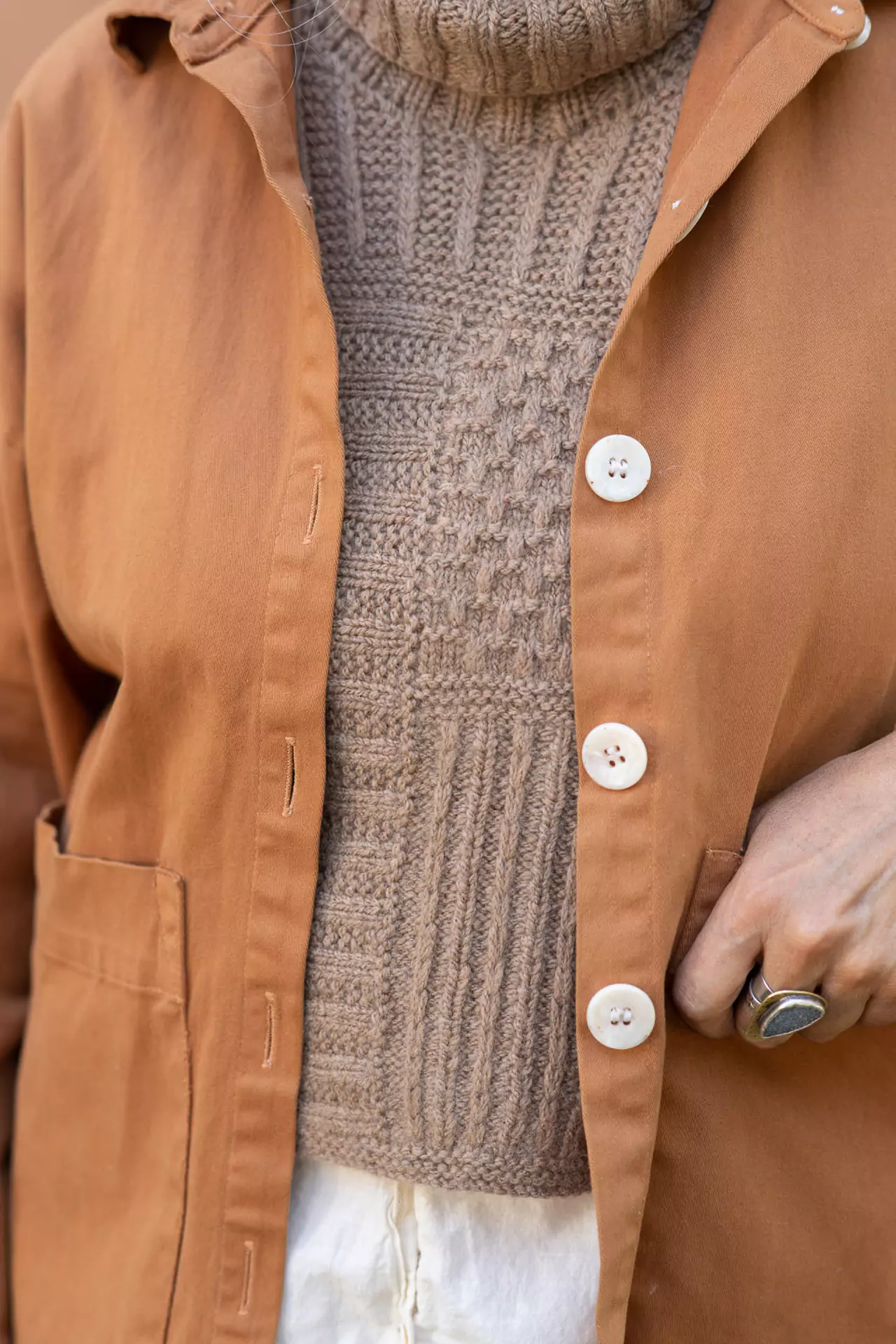
Download the Knit Dickey pattern at Making Magazine
The Knit Dickey pattern is available in Making Magazine Winter Vol. 4 / Gifts. This is a digital-only issue, and contains a multitude of wonderful little projects to be getting on with.You can download and print your patterns immediately, with no delay needed to get making (beyond ordering some materials, maybe).
This new design is my last knitting pattern release for 2022, and I’m so happy that it’s part of Making Magazine! I hope you have fun knitting, and that you enjoyed reading more about the background of this design.
A huge thank you to all of my Patreon supporters through 2022, who have enabled me to continue designing and sharing my creative work. I couldn’t do it without you!
Photographs in this blog post are copyright Making Magazine 2022

